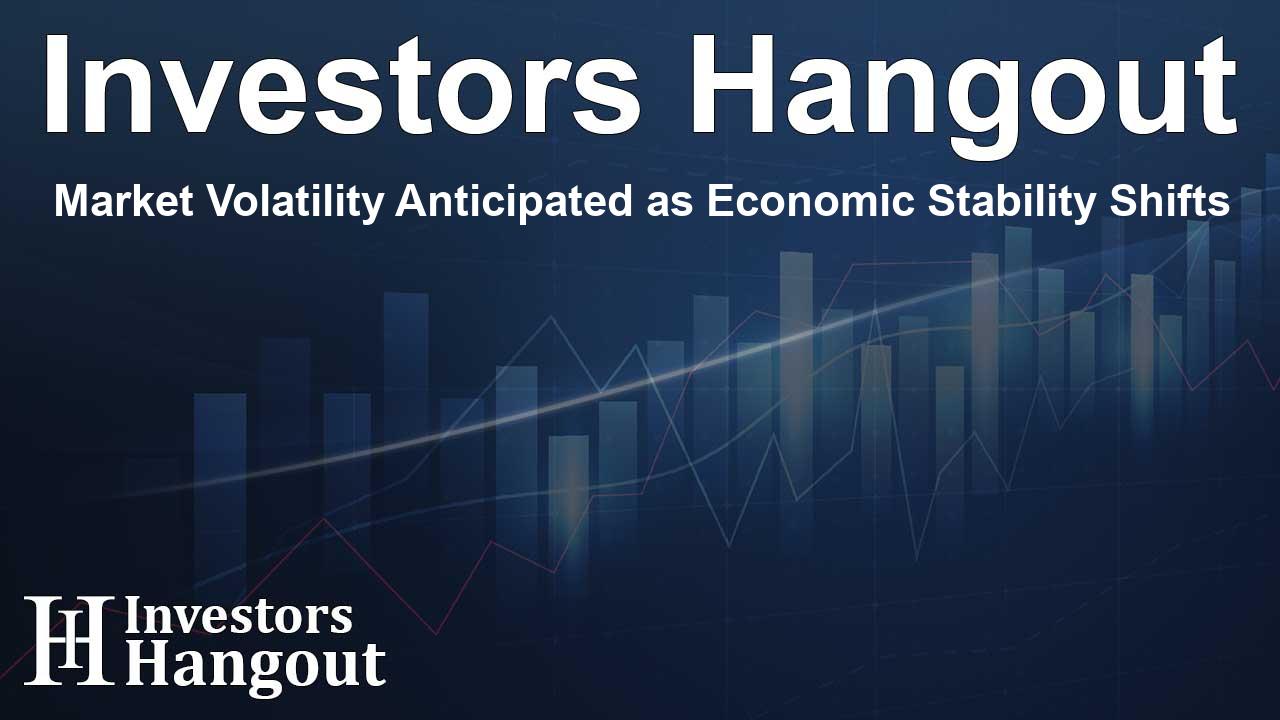Market Volatility Anticipated as Economic Stability Shifts

Anticipating Market Volatility Amid Economic Uncertainty
As we navigate through changing economic landscapes, recent insights from UBS suggest that market volatility is on the horizon. This anticipated fluctuation is attributed to the current economic uncertainty, coupled with speculation surrounding a potential second presidential term for Donald Trump.
Recent Economic Indicators and Their Implications
In the past week, there has been noticeable pressure on both US stocks and bonds. This trend follows the release of robust economic data, leading to speculation about the Federal Reserve's ability to initiate rate cuts in 2025.
S&P 500 Performance Under Scrutiny
In response to the latest employment data, which reported 256,000 new jobs—significantly surpassing the projected 163,000—the S&P 500 saw a decline of 1.5%. The unemployment rate also edged down to 4.1%, raising further concerns among investors.
Treasury Yields on the Rise
The 10-year Treasury yield has climbed 10 basis points to 4.77%, marking its highest level since the beginning of the year. Over the week, the S&P 500 was down by 1.9%, showing a futures decline of 0.6% at the time of writing. This overall downward trend follows two exceptional years for the S&P 500, with annual returns consistently exceeding 20%, reminiscent of market performance seen in the mid-1990s.
Strong Job Reports and Their Impact on the Fed's Policies
Friday's job report was just one piece of a larger puzzle, as it followed other strong indicators earlier in the week. These included a six-month high in job openings per the JOLTS survey and an optimistic outlook for the services sector, as reported by the ISM survey. However, the surge in the prices paid component of these surveys raised concerns about ongoing inflation and progress towards disinflation.
Insights from UBS Leadership
Mark Haefele, the Global Chief Investment Officer of UBS Wealth Management, commented on these developments. He noted that the recent flow of economic data seems likely to intensify concerns among Federal Reserve officials. They may realize that achieving the 2% inflation target remains a work in progress, resulting in no immediate need for aggressive rate cuts.
The Federal Reserve's Stance on Rate Cuts
This sentiment mirrors the discussions noted in the minutes from the Fed’s recent meetings, indicating that further efforts are necessary to tackle inflation. In light of recent data, the Fed’s median forecast for future rate cuts in 2025 has been reduced to just 50 basis points. Market expectations have also moderated, with pricing indicating currently only 29 basis points of relief.
Shifting Investor Sentiment Moving into 2025
The economic climate for 2024 is projected to remain strong, but Haefele anticipates a cooling in growth as the Federal Reserve pushes to meet its inflation objectives. He stated that this environment may provide opportunities for a policy easing of 50 basis points later in the year.
International Economic Context
Global conditions also play a crucial role in shaping expectations. The recent hawkish stance noted during December’s Fed meetings underscores a potentially slower trajectory for rate cuts. Nonetheless, Haefele indicates that market perceptions may be underestimating the likelihood of easing, expressing confidence in a drop in US cash returns.
A Global Perspective on Interest Rates
Many economies are transitioning back to a low-interest-rate environment. For instance, Switzerland's policy rate stands at just 0.5% following a 50 basis point cut in December. UBS analysts also predict that the European Central Bank might enact a 100 basis points cut this upcoming year, reflecting similar sentiments worldwide.
Frequently Asked Questions
What triggers market volatility according to UBS?
UBS indicates that ongoing economic uncertainty and political factors, like the potential of a second Trump term, contribute to anticipated market fluctuations.
How have US economic indicators affected investor sentiment?
Recent strong job reports and economic data shifts have altered investor sentiment from recession fears to hopes for stability and growth.
What is the Federal Reserve's current outlook on rate cuts?
The Fed’s median forecast suggests only modest rate cuts of 50 basis points in 2025, amid concerns about ongoing inflation.
How does global economic policy affect local markets?
Global moves toward lower interest rates are impacting local US financial dynamics, as seen in central banks like the European Central Bank and Swiss National Bank.
How do UBS's predictions reflect current financial trends?
UBS's insights illustrate the interplay between strong economic data and market expectations, forecasting significant shifts in sentiment among investors.
About Investors Hangout
Investors Hangout is a leading online stock forum for financial discussion and learning, offering a wide range of free tools and resources. It draws in traders of all levels, who exchange market knowledge, investigate trading tactics, and keep an eye on industry developments in real time. Featuring financial articles, stock message boards, quotes, charts, company profiles, and live news updates. Through cooperative learning and a wealth of informational resources, it helps users from novices creating their first portfolios to experts honing their techniques. Join Investors Hangout today: https://investorshangout.com/
Disclaimer: The content of this article is solely for general informational purposes only; it does not represent legal, financial, or investment advice. Investors Hangout does not offer financial advice; the author is not a licensed financial advisor. Consult a qualified advisor before making any financial or investment decisions based on this article. The author's interpretation of publicly available data shapes the opinions presented here; as a result, they should not be taken as advice to purchase, sell, or hold any securities mentioned or any other investments. The author does not guarantee the accuracy, completeness, or timeliness of any material, providing it "as is." Information and market conditions may change; past performance is not indicative of future outcomes. If any of the material offered here is inaccurate, please contact us for corrections.